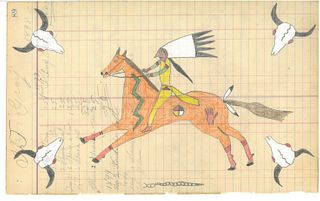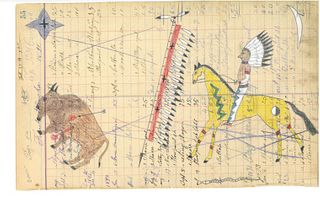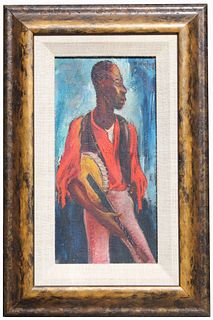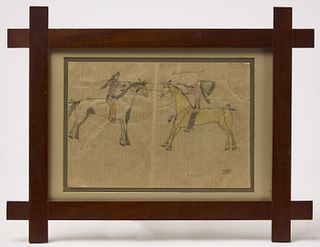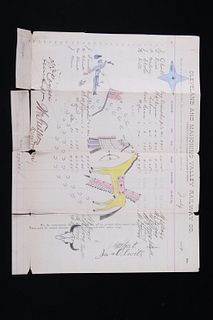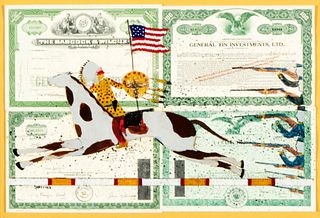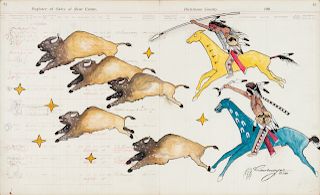Poignant and evocative, ledger art is an important part of Native Americans on the Great Plains to portray their history on their own terms in the late 19th and early 20th centuries. Their stories translate - with an intimacy and immediacy - the story of American history at a time of disappearing buffalo herds and relegated tribes on reservation land. Historically, ledger art depicted resistance and resilience on the frontier, while in contemporary pieces, these themes are portrayed through more modern narratives. From pictorial drawings on the rock to later hide, this art form evolved into a form of narrative storytelling which depicted the personal narratives of battle, hunting, ceremonies, and courtship. Bidsquare's online auction features a large collection of Native American ledger drawings that perfectly depict the creativity and extraordinary talent of Great Plains Indians. There are a lot of intricate details in these pieces, and they often portray scenes from tribal life or natural scenery and are a true testament to Native American artistry and skill.
In contrast to the romanticized images of the American West painted and sculpted by Anglo artists, ledger art offers a unique perspective on how Plains people saw themselves. Using everyday materials, self-taught artists created Ledger Books to convey their poignant experiences. As well as expressing nostalgia for the past, they also express a sense of curiosity about the future. Initially, ledger drawings depicted military exploits and acts of heroism seen in buffalo hide paintings, but changes took place after populations were forced to settle on reservation lands. As the era of warriors drew to a close, ledger drawings gradually changed from military exploits and scenes of warfare to domestic and courtship scenes. Due to the scarcity of hides during the Reservation Era, Native Americans continued to document and tell their stories through drawing as an adaptive art form. With the arrival of more white Americans into the West, the art became known as "ledger art" since it was drawn as repurposed found pages of ledger books available to them.
Ledger Art continues to be practiced by some artists today. Among those to watch for are Merle Locke, Terrance Guardipee, Donald Montileaux, and Dolores Purdy. These artists explore the connection between their tribal history, the arrival of the Europeans, and their everyday lives now.
Collectors of Native American art, Americana, and Western history are drawn to ledger art across several genres because it resonates with them on a visceral level. More ledgers are becoming available due to increased collector interest. On Bidsquare, you can sift through ledger art pieces created during different time periods as well as search for ledger art by the color - popular works feature beige, brown, black, and gold colors with bold, neutral palettes.
Quick facts about Ledger Drawings
- Ledger drawings should never be stored in a basement or attic due to damp conditions. Avoid direct sunlight. The hallway would be a good place to hang it.
- There is a greater degree of durability with colored pencils than with other pigments.
 Estimate$2,000 - $3,000
Estimate$2,000 - $3,000 Estimate$150 - $200
Estimate$150 - $200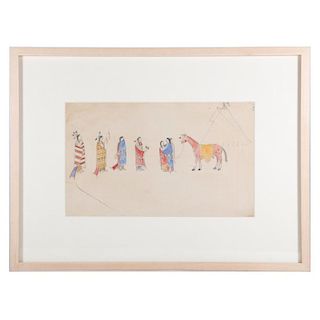 Estimate$1,000 - $1,500
Estimate$1,000 - $1,500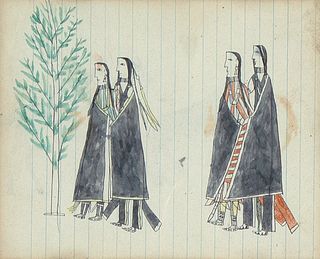 Estimate$2,000 - $4,000
Estimate$2,000 - $4,000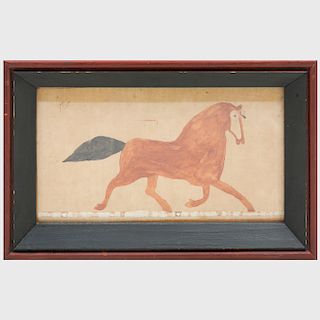 Estimate$500 - $700
Estimate$500 - $700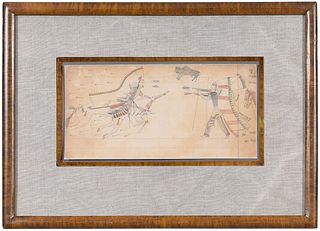 Estimate$3,000 - $5,000
Estimate$3,000 - $5,000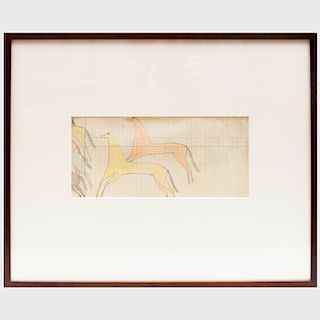 Estimate$600 - $800
Estimate$600 - $800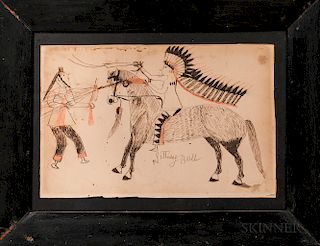 Estimate$4,000 - $6,000
Estimate$4,000 - $6,000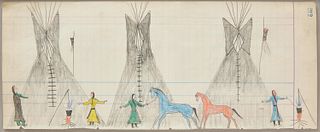 Estimate$4,000 - $6,000
Estimate$4,000 - $6,000


 EUR
EUR CAD
CAD AUD
AUD GBP
GBP MXN
MXN HKD
HKD CNY
CNY MYR
MYR SEK
SEK SGD
SGD CHF
CHF THB
THB Live Auction in Progress
Live Auction in Progress
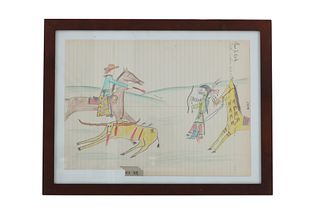
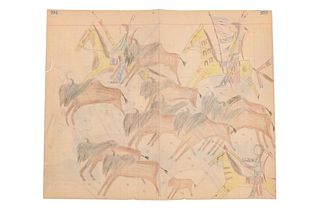
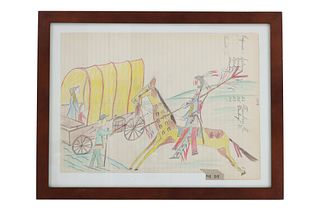

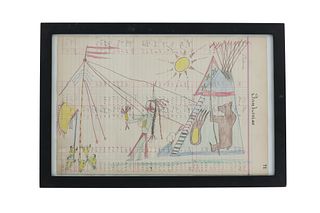


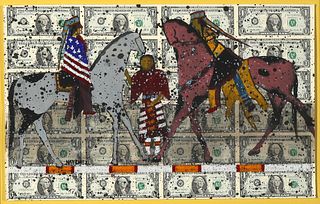


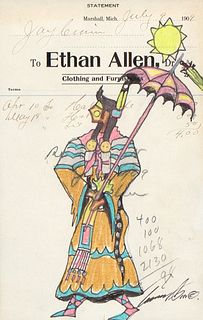
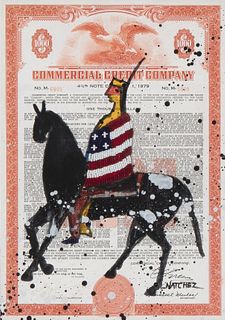
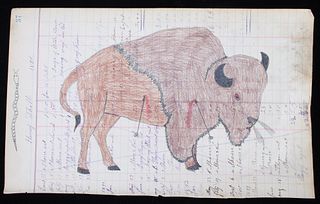

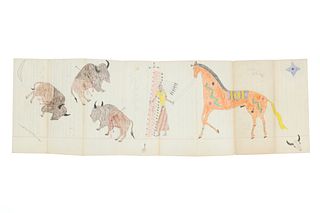
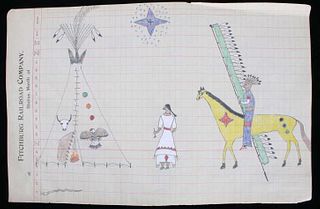
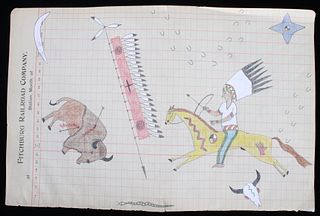
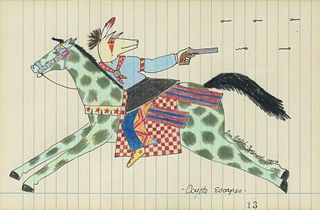
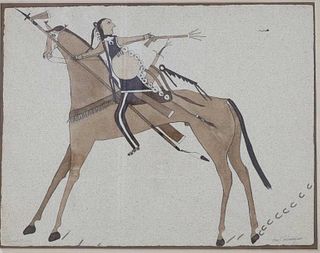
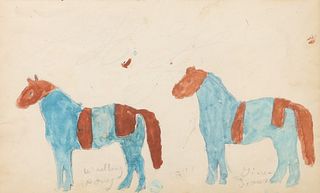
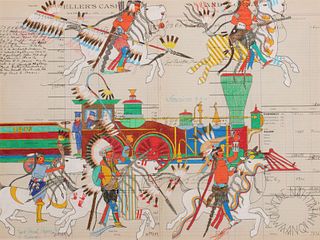
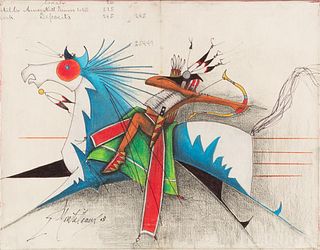

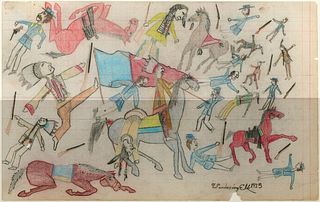
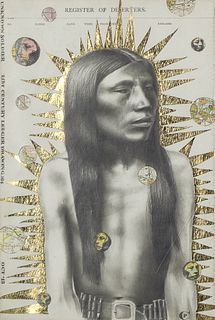
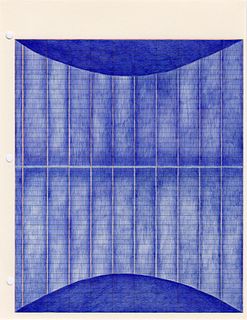
![Donald F. Montileaux [Yellowbird], High Horse, 1995](https://s1.img.bidsquare.com/item/m/1162/11627355.jpeg?t=1NCXPX)
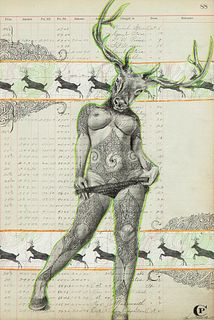
![Tsaitkopeta [Bear Mountain], Kiowa Ledger Drawing, ca. 1875](https://s1.img.bidsquare.com/item/m/7804/7804704.jpeg?t=1L4zy0)
